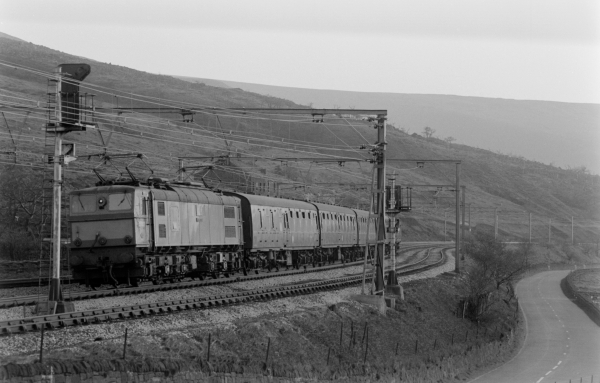Manchester to Sheffield: The Woodhead Route
EM2 class electric locomotive on a passenger train near Woodhead. See Details
There is no doubt that the Great Central Railway's 'London Extension' was the company's most famous route. So well known was the railway, in fact, that many have been led to believe that the Great Central system consisted of the London Extension and nothing more. This was not the case, however, as the Great Central system was far more expansive than is first realised.
Before changing its name to the Great Central Railway on the 1st August 1897, the company had previously been known as the Manchester, Sheffield & Lincolnshire Railway (MSLR). The MSLR had in turn been formed by amalgamating the Sheffield, Ashton-under-Lyne & Manchester Railway, the Sheffield & Lincolnshire Junction Railway, the Great Grimsby & Sheffield Junction Railway, and the Grimsby Docks Company. The MSLR then teamed up with the London & North Western Railway to jointly operate the Manchester South Junction & Altrincham Railway.
The joint operation method continued when the MSLR partnered the Great Northern Railway and the Midland Railway in the creation of the Cheshire Lines Committee (CLC). This arrangement gave the MSLR (and later the Great Central) access to Southport, Liverpool and Chester to name but a few. The CLC operated from Manchester Central Station, which today forms the city's G-MEX centre.
Of all of these pre-London Extension routes operated by the MSLR, it was the line running between Manchester and Sheffield that made up the heart of the system. Known as the 'Woodhead Route', the railway had been built by the Sheffield, Ashton-under-Lyne & Manchester Railway and possessed some of the severest gradients on any British main line railway. Read on to find out more about this spectacular line.








